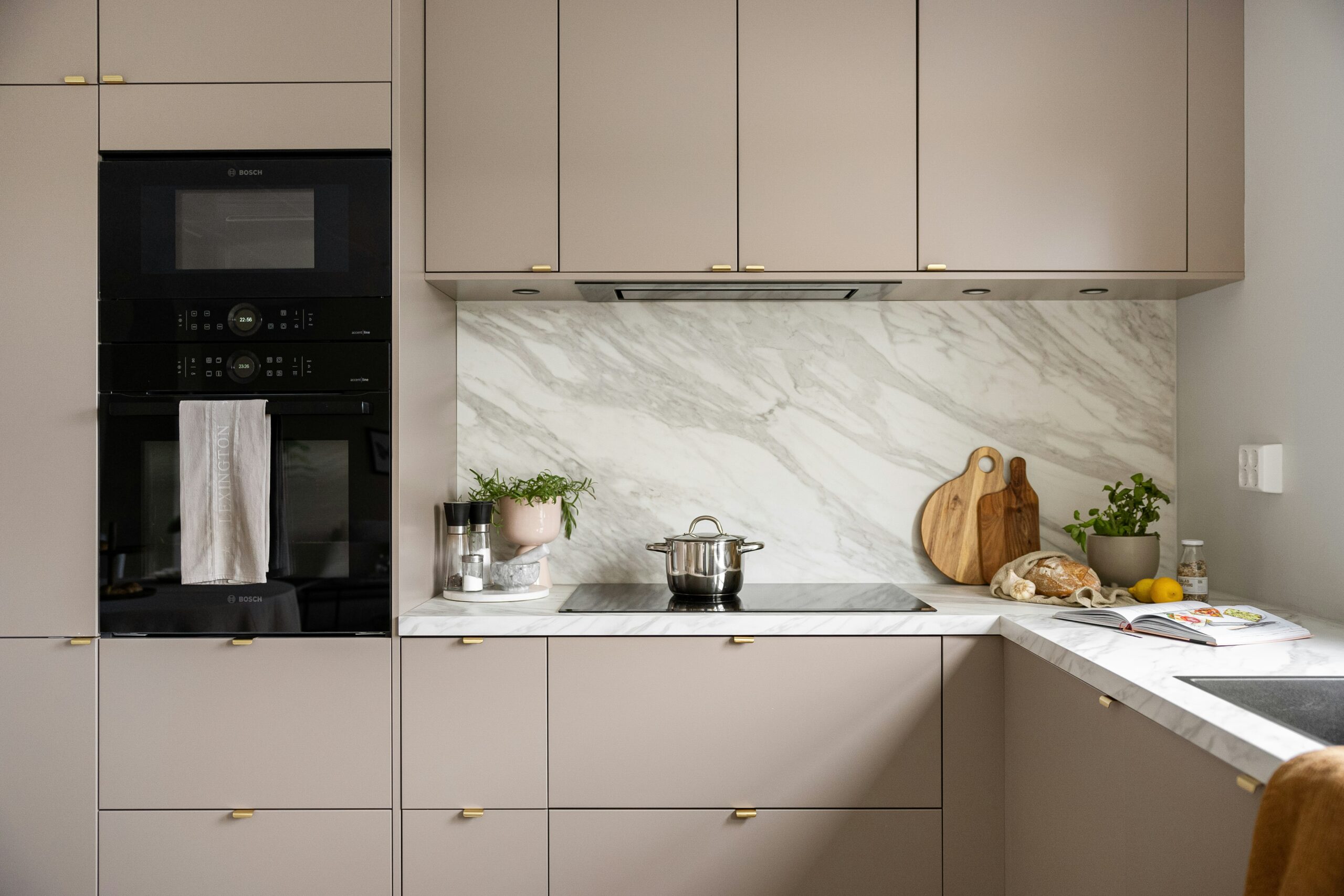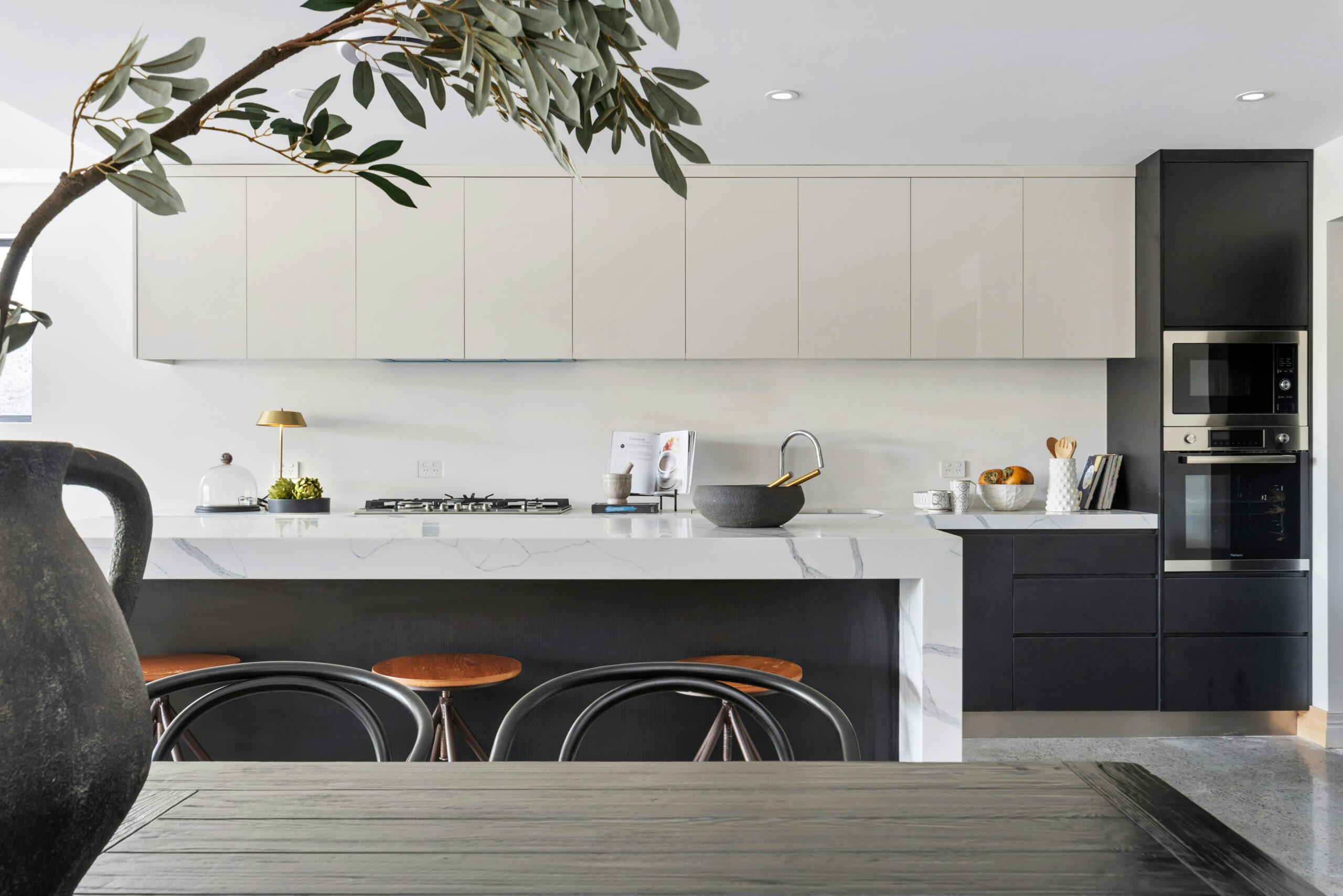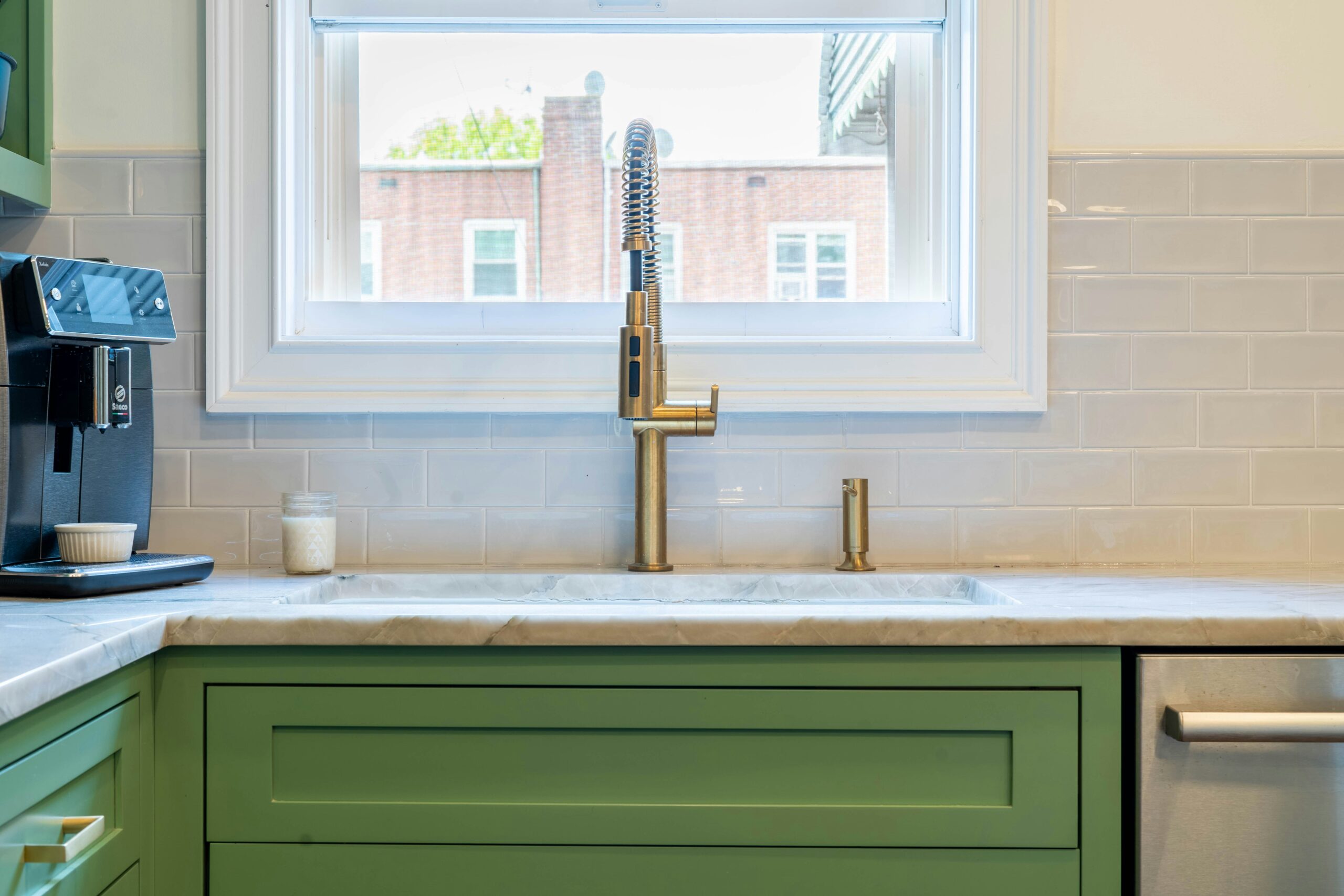Granite kitchen benchtops, splashbacks, wall cladding, floor tiles and sinks are getting more and more popular!
While this unique natural stone has been used in construction and interior design for many, many years, granite remains an increasingly common choice of material. But is it right for your kitchen
That depends on your needs and your personal preferences. To help you make the right decision, here is an introduction to using granite in your kitchen.
Using Granite in the Kitchen
Granite is a natural stone that is formed beneath the Earth’s surface. Its unique composition, primarily consisting of materials such as quartz, feldspar and mica, is formed by a slow crystallisation of magma. More specifically, high temperatures beneath the ground allow the magma to cool slowly over millions of years.
This process and its components is what gives it the iconic speckled and granular aesthetic. It also contributes to its durability and hardiness.
Granite is quarried in many regions around the world. The most well-known and popular quarries are in the U.S., Italy, Canada, China, India, Brazil, and parts of Africa.
This stone is a popular choice of material for use in the kitchen because of its high level of resistance to scratching, heat damage, and staining. However, there are both advantages and disadvantages to using granite – which we will break down below.
Options for Incorporating Granite in the Kitchen
Granite can be effectively used in various applications to enhance both the appearance and functionality of your kitchen.
1. Benchtops
Granite kitchen benchtops are the most popular option. The unique aesthetic of granite and its functional durability make it a stunning and practical option.
2. Splashbacks
A granite kitchen sink splashback is a contained and therefore budget-friendly way of infusing this fantastic stone into your home. It can add a sophisticated and beautiful focal point while providing functional utility.
3. Wall Cladding
If you’re more interested in a grander granite kitchen makeover, consider wall cladding. This natural stone can create a striking visual effect and add both texture and depth to your kitchen.
4. Floors
Granite tiling is a durable and luxurious-looking option for flooring. Its hardiness makes it resistant to heavy foot traffic and activity, and easy to keep clean and maintain.
Pros and Cons of Using Granite in the Kitchen
Pros
1. Durability
As mentioned above, granite is an incredibly hard form of natural stone. This hardiness makes it ideally resistant to scratches and heat. For a room in the home like a kitchen, which is prone to high levels of activity, exposure to food and liquid, and likely to be subjected to items of varying temperatures, using a highly durable material like granite is key.
2. Aesthetic
Granite is a beautiful type of stone. Its iconic granular aesthetic makes it stand out even amongst other forms of natural stone. But, importantly, granite comes in a wide range of colours, patterns, and shades so if you love the thought of using it in your kitchen you can find the perfect slab to suit your chosen design style.
3. Maintenance
Granite needs to be professionally sealed to ensure its integrity and appearance. But once done, it is easy to clean, resistant to stains and simple to maintain. Always use approved cleaners that aren’t high in acidity. Avoid hard brushes. And wipe down regularly with warm water and a clean cloth and your granite will look spectacular for many years to come.
4. Uniqueness
Every slab of granite is unique. Because of the fact that the stone is quarried out of the ground and not produced en masse in a factory, every single stone is singular. When you opt for a granite kitchen benchtop or sink splashback, no other granite anywhere in the world will look precisely the same.
5. Investment
Granite stone is a smart investment when it comes to your home. Not only does the luxurious appearance and popularity of granite enhance the overall value of your home today, but its longevity and durability means that your return on investment will stretch long into the future should you choose to sell your home down the track.
Cons
1. Price
Granite kitchen makeovers can be more expensive than using other materials. Both the cost of the stone itself and the installation cost needs to be considered if you intend on installing a granite benchtop, splashback, flooring or wall cladding.
2. Weight
Granite is also a heavy stone. This means that not all kitchens will be ready and suitable for a granite benchtop as is. Some cabinetry may require additional support to ensure it has the sturdiness and strength to bear the weight.
3. Porosity
Granite is highly durable but it is porous. This is why it is important to ensure your granite benchtop or flooring is properly sealed by a professional every few years. Over time, without the right care and maintenance, it can absorb liquids spilt on it and stain.
4. Cool Surface
This beautiful natural stone has a unique ability to remain cool to the touch. While this is most commonly an advantage in places with warm weather and in rooms of the home likely to see a hive of activity, such as a kitchen, it might not suit all preferences.
Want a kitchen make-over?
Frequently Asked Questions About Granite Kitchens
Granite countertops are highly durable, aesthetically pleasing, scratch and heat resistant, and every slab is unique. This combination of advantages make it a great choice for use in the kitchen.
To maintain granite, it is recommended that you clean them regularly using warm water and a non-abrasive cloth and detergent. Avoid using harsh chemicals and regularly reseal the granite every few years.
Sealing frequency can vary based on a number of factors. Generally, every few years will suffice but the more regularly you seal the more it helps prevent staining.
Granite is heat-resistant, but it is always advisable to use trivets or heat pads under very hot pots and pans. Sudden temperature changes have been known to cause thermal shock, and potentially lead to cracks or damage.
Like with heat, granite is scratch-resistant. Nevertheless, we recommend using a cutting board to both protect your knives from dulling and keep your granite unexposed to any potential scratching.
Start Planning Your Granite Kitchen Makeovers with Euro Marble
At Euro Marble, we love all things granite and stone.
Whether you want to incorporate granite around your kitchen sink, are considering end-to-end wall cladding, or just want to arrange a time to come into our showroom and see our beautiful collection of granite slabs for yourself, make sure to contact our team today.



